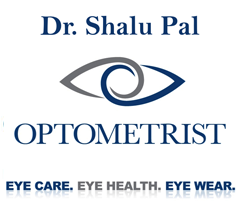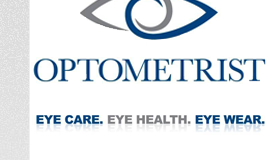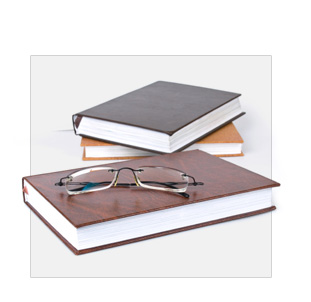Contents |
Vision Development: One of Childhood’s Most Important Tasks
Introduction
During the first year of life, a large part of eye anatomy and vision development happens, but children continue to sharpen their eyesight into their teenage years. The muscles inside the eye that enable a child to focus strengthen and brain connections multiply. The six muscles that control eye movements are also getting stronger and their motion becoming more refined and accurate, which is important for the child to properly aim the eyes, keep them working as a team, and tracking objects as they move in space.
What can parents do to help their children develop their visual skills?
The Basics
Even while still in the crib, infants are drawn to movement, patterns and colors like pinwheels and crib mobiles. During the first two years of life, any form of visual stimulation will attract a child’s attention; a term used by developmental specialists is preferential looking, which means that the eyes will automatically look towards an object that is moving instead of one that is motionless, one that is brightly colored or has more contrast than ones that have more subdued hues.
Any visual stimulation will help the child to make more connections between the nerves in the brain; the more connections there are, the better the child is able to make use of their improving visual skills to make sense of the world. In other words, efficient vision helps the child learn and helps develop the other senses as well.
Perhaps the most important skill for a child to develop is the link between the hand and the eye, more accurately described as body-to-eye coordination. Outdoors, ring-toss games or kicking a soccer ball around are fun and help get the entire body into the act. When the child is a little older, a jump rope is great fun and terrific for coordination.
Children between the ages of two and five are eager to look at pictures and draw. Reading to a child helps make the connection between vision and hearing. Games and toys with bright colors and moving objects keep the learning process going.
| Parents may be surprised to learn that, using preferential looking and other tests, it is possible to examine very young children for differences between the two eyes and the ability to see clearly with both. In any case, every child should be seen by an optometric physician before the age of three, to rule out such things as large refractive errors such as near- and far-sightedness or astigmatism. Other conditions that sometimes run in families are strabismus (crossed eyes or eyes that don’t aim together), amblyopia and colour vision deficiencies.
Amblyopia, a condition in which the vision in one eye does not develop normally, is especially important to diagnose and treat early to keep it from becoming permanent. Any of these signs should signal the need for an immediate vision examination:
After the first vision examination by the age of three, another should be done before the age of five and yearly after that. Particularly throughout the first decade, a child is growing at an amazing rate, and the eyes of course change, too. School DaysIn our modern school systems, good visual skills are beyond necessary; in fact, poor visual skills will usually result in scholastic difficulty and even failure in academic work. During the first three years of school, children are learning how to read, but in the fourth year, they must make the transition to using their reading in order to learn. Reading is a rather complex task, and one that good readers often take for granted. Three distinct visual skills are needed. First, the letters on the page must be clear and in focus. Second, the eyes must track each line of print across the page, and third, they must make a fast and accurate jump from the end of one line to the beginning of the next. Additionally, in the classroom, the eyes must be able to change their focus from farther away to close at hand, and back again and again. Now, we also add the use of a computer, too, which makes even more demands on vision, which are similar but not quite the same as simply focusing on a printed page. | Labels
(Learning Disability, ADHD, Dyslexia and others) Do not allow your child to be classed as dyslexic or learning disabled without first having his or her vision tested by a developmental optometrist, a specialist in children’s vision. Learning disabilities of various sorts and hyperactivity do exist, of course, but parents may be surprised to find that relatively simple-to-treat lack of visual skills like focusing, aiming, tracking or getting from one line to the next are often overlooked, even by school officials and testing experts. As part of a comprehensive vision examination, the optometrist will check all of these skills, in addition to looking for any refractive error. If your child complains that reading is “hard,” or “boring,” and if you have noticed that reading is avoided whenever possible, it is time for a vision exam, if for no other reason than to rule out any of these problems. Children who have good visual skills almost always develop a love of reading and are very good at it. |
Clarity: if there is any far-sightedness (hyperopia or hypermetropia) the focusing muscles within the eye must compensate for it. This can be easily accomplished by most children but can be quite difficult for those with a significant amount, both in getting the letters clear and in maintaining that clarity over time as reading continues. Other refractive errors such as near-sightedness (myopia) or astigmatism must be corrected.
Tracking: most of us can move our eyes smoothly and easily as we follow the line of print, but for those with poor tracking ability this can be a real challenge. Sometimes, the eyes don’t make smooth movements but tend to jump forward; then, backing up, the brain can interpret the letters as being reversed themselves, or as the order of the letters being backwards. This can sometimes result in small words like “bat” or “pat” to be misread as “tab” or “tap.”Jumping: if we cannot make the transition from one line of print to the next, it is very easy to re-read a line or skip one, which makes it hard to get the ideas across.
Setting aside the changing of focus from desktop across the room and back again, it is obvious that any lack of visual skills in any one of the three areas noted above must also have a detrimental effect on reading. Usually, however, if there is difficulty in one of these, there will also be difficulty in the other two. It is no wonder at all that children with poor visual skills find reading hard; the wonder is that most children develop these visual skills on their own, but if they don’t, academic success will be problematic, at best.
When the brain is used just to keep the letters clear, to track across the page, and get from one line to the next, there may not be enough energy left for it to comprehend what is being read. The material may require several repeated efforts in order to understand what it says, so of course it seems to be boring, because the meaning of the words is lost.
It is important to note that none of these visual-skill deficiencies has anything to do with intelligence or willingness to work hard. Children with these problems are generally neither unintelligent nor lazy.
The best news is that once a child is diagnosed, treatment is usually relatively easy and effective, consisting of a set of exercises that can be done at home or at the optometrist’s office. Note: a word here about school vision screenings; parents should not pay any attention to them at all, unless the screening is done by eyecare practitioners. Screenings done by teachers or school nurses are very likely to produce false-negative results, meaning that the screening indicated that there was no vision problem, but that there was one. It is not that these professionals don’t have good intentions; it is just that their screening protocols are not adequate to find vision problems that can cause difficulty reading. For example, a school screening may only test vision at 20 feet, which isn’t helpful for a child who holds a book 14 inches away from his eyes.
Early Vision Examination Needed
Most children develop good visual skills without any help, but sometimes there are obstacles. Luckily, the obstacles are usually not hard to pinpoint and are easily corrected.
Every child should have his or her vision examined by the age of three, and periodically after that, just to be sure there is no roadblock on the avenue to academic success. Along with their new shoes and pencil boxes (or maybe a laptop computer), send your children back to school with good visual skills that will, arguably, are even more important.







